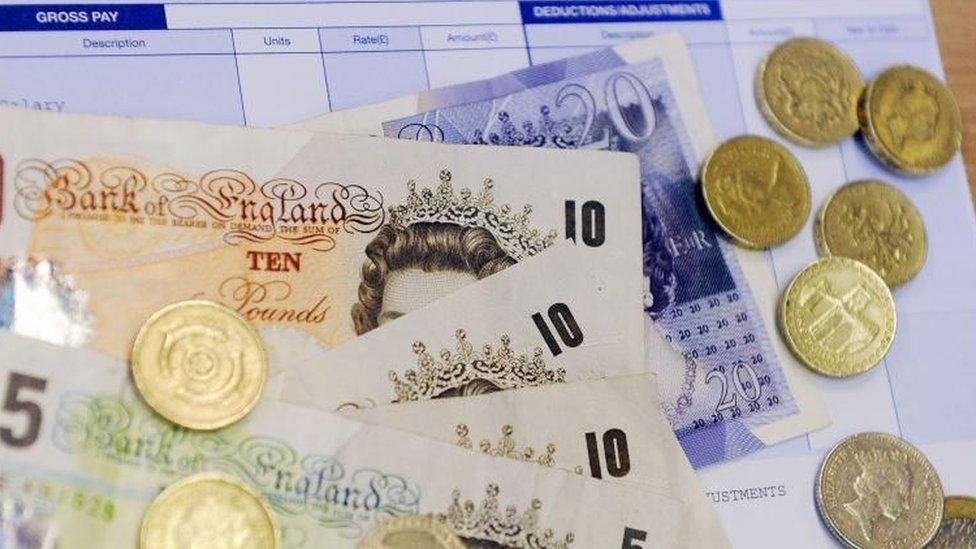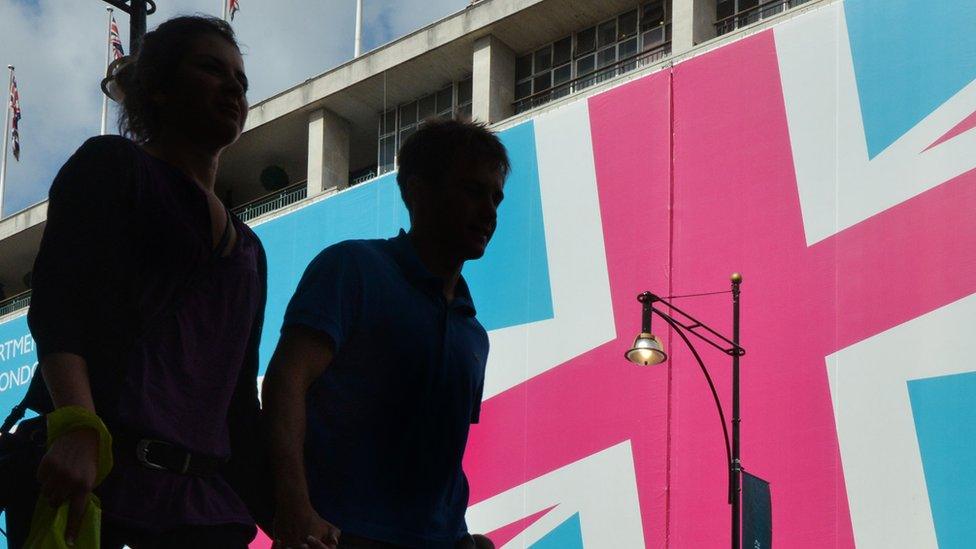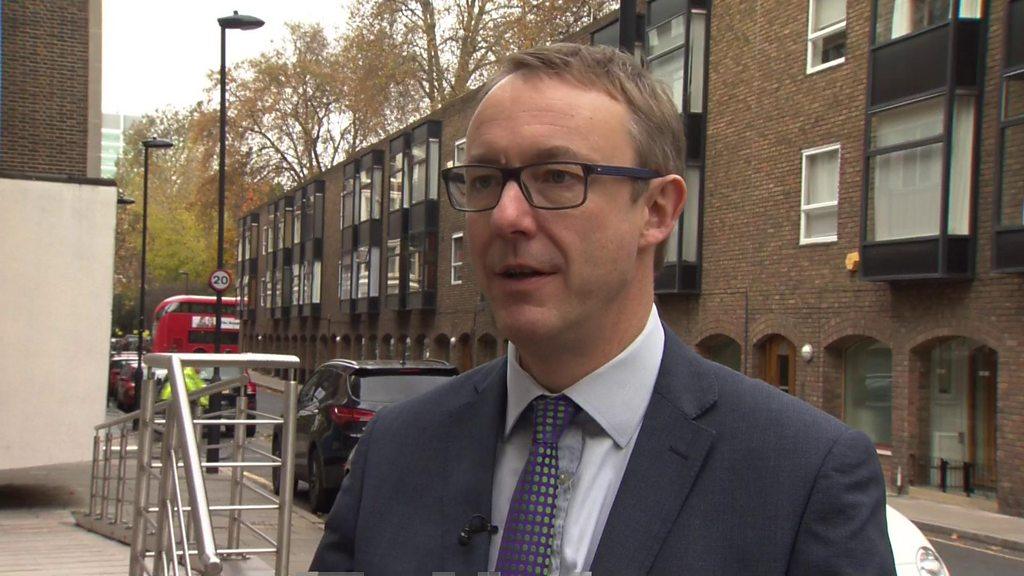Household incomes lag in Wales in latest UK figures
- Published

Newport has the highest gross disposable household income per head than any council area in Wales
Household income in Wales is the lowest of the UK nations, apart from Northern Ireland, according to new figures.
Gross disposable household income (GDHI) looks at income after taxes, benefits and pensions have been taken into account.
The average per head in Wales increased to £16,341 for 2015, according to the Office for National Statistics (ONS)., external
But the country also saw the largest growth in household income of the UK nations with a rise of 3.3%.
For the first time, the figures are also broken down for local authorities.
It shows Newport has the highest GDHI in Wales at £18,410 per head. Blaenau Gwent has the lowest with £12,878 which is also the fourth lowest of local council areas in the UK.
Flintshire ranks second highest in Wales with £18,280 per head, above Cardiff on £18,137.
We should be careful when trying to speculate as to exactly why both Newport and Flintshire are ahead of the Welsh capital on these provisional figures.
But they are close to the Bristol commuting area and northern powerhouse respectively.
Both have also attracted their fair share of new industries.
At the county level, Ceredigion saw the highest growth - 6.3% - while the lowest with 1.6% was in Merthyr Tydfil, where the GDHI is £15,821 per head.
The local area with the lowest in the UK is Nottingham with £12,779 and the highest is again in the London area of Kensington, Chelsea, Hammersmith and Fulham with £52,298 per head.
Wales' GDHI per head figure is 85.5% of the UK figure - a slight narrowing of the gap of 0.3% - although it has not been this low since the late 1990s.
When nations and English regions are looked at, the income per head figure is still lower than Wales in Northern Ireland, Yorkshire and Humberside and the north east of England.
'Culture of consumerism'
But the figures show Wales punching below its weight in the UK as a whole. With 5% of the UK population, household income in Wales only accounts for 4.1% of the UK total.

Teacher Leanne Davies and grandmother Sylvia Rogers talk in Tredegar about the cost of living
VIEWS FROM BLAENAU GWENT
Leanne Davies, who works as a teacher four days a week, said her salary has not kept up with price rises.
"Definitely my food shop has gone up quite a lot," she said.
"I try to budget, if I can't afford something, I don't buy it.
"My husband and I are both working, so we're quite lucky but we save less than we used to.
"You worry about the job climate and the uncertainty. My husband was made redundant a few years ago and that was a difficult time. We try to be careful and put away as much as we can.
"I could work five days but I prefer to manage and work four days and have a bit more time."
Blaenau Gwent has been one of the traditionally poorest areas of Wales and these latest economic figures are no comfort.
The GDHI gap with Wales as a whole has widened in recent years.
There is a working age population of nearly 44,000 with the unemployment rate above the Welsh average, with 2,000 unemployed (in 2016).
Sylvia Rogers retired to look after her baby granddaughter, Sienna, so her daughter could go back to work before the end of her maternity leave.
She said council tax rises and increases in food costs and gym memberships were things she had noticed.
"You cut your cloth. If you have less money you have less activities and trips you can go on," she said.

Looking at what people have left to spend after tax, benefits or pensions are accounted for gives us a more accurate picture than just looking at earnings.
But some researchers say we should also look at other indicators which suggest people are struggling.
Judy Stockford, a lecturer in finance at the Cardiff School of Management, said: "There are lots of different pieces of research showing us that ordinary working people are struggling just to get by and are borrowing - sometimes expensively - just to pay for essential living costs.
"We've had weak growth in earnings but we've seen higher rises in prices and we're living in a culture of consumerism.
"We are used to 'having now pay later' and are seriously over-indebted as a nation. This dates back to the 1970s and 80s when the markets were de-regulated. Personal borrowing has grown and grown."
According to the Money Charity, the average credit card debt per household in March was £2,504.
"Credit card borrowing is at an all-time high, possibly fuelled by all these zero percent deals which last for a while and then become expensive," said Ms Stockford.
She said young people in particular could get caught up in credit difficulties and debt crisis when they were inexperienced in dealing with money.
- Published16 March 2017

- Published2 March 2017

- Published15 May 2017

- Published24 November 2016
